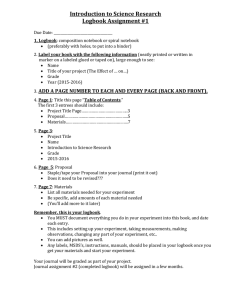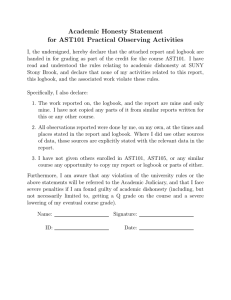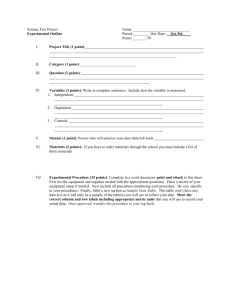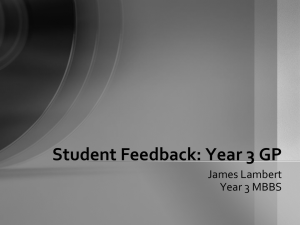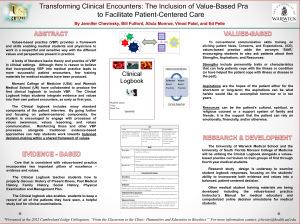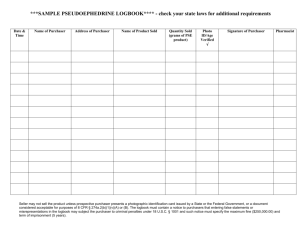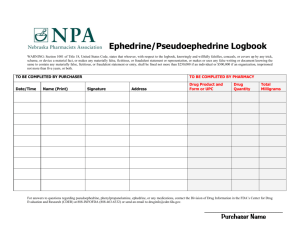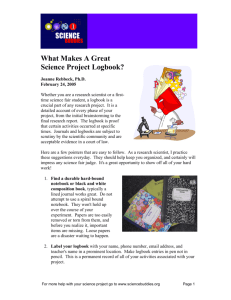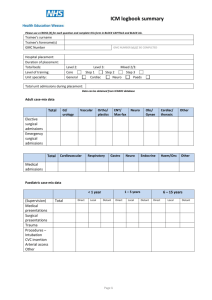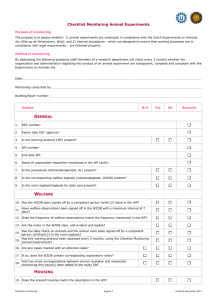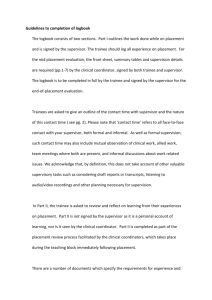SCIENCE FAIR LOGBOOKS
advertisement
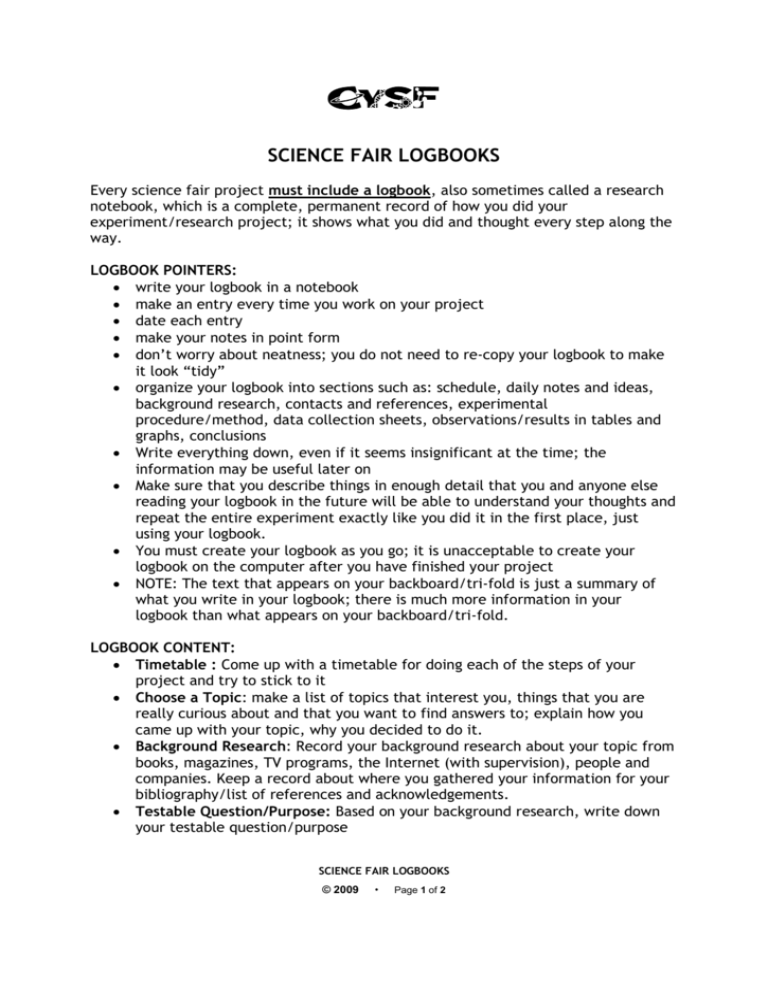
SCIENCE FAIR LOGBOOKS Every science fair project must include a logbook, also sometimes called a research notebook, which is a complete, permanent record of how you did your experiment/research project; it shows what you did and thought every step along the way. LOGBOOK POINTERS: write your logbook in a notebook make an entry every time you work on your project date each entry make your notes in point form don’t worry about neatness; you do not need to re-copy your logbook to make it look “tidy” organize your logbook into sections such as: schedule, daily notes and ideas, background research, contacts and references, experimental procedure/method, data collection sheets, observations/results in tables and graphs, conclusions Write everything down, even if it seems insignificant at the time; the information may be useful later on Make sure that you describe things in enough detail that you and anyone else reading your logbook in the future will be able to understand your thoughts and repeat the entire experiment exactly like you did it in the first place, just using your logbook. You must create your logbook as you go; it is unacceptable to create your logbook on the computer after you have finished your project NOTE: The text that appears on your backboard/tri-fold is just a summary of what you write in your logbook; there is much more information in your logbook than what appears on your backboard/tri-fold. LOGBOOK CONTENT: Timetable : Come up with a timetable for doing each of the steps of your project and try to stick to it Choose a Topic: make a list of topics that interest you, things that you are really curious about and that you want to find answers to; explain how you came up with your topic, why you decided to do it. Background Research: Record your background research about your topic from books, magazines, TV programs, the Internet (with supervision), people and companies. Keep a record about where you gathered your information for your bibliography/list of references and acknowledgements. Testable Question/Purpose: Based on your background research, write down your testable question/purpose SCIENCE FAIR LOGBOOKS © 2009 Page 1 of 2 Hypothesis: write down what you think the results of your experiment will be based on the research that you’ve done Materials: List everything that you will need to do your experiment, such as equipment, ingredients, quantities of ingredients, measuring tools etc. Be very specific – give lots of details Procedure: List the steps you will go through to do your experiment. If you make any changes to the procedure after you start your experiment, describe them in your logbook with an explanation about why you made the change(s) and if the change(s) will affect the results collected prior to the change. Variables: list the controlled variables, the manipulated variable, and the responding variable Data: record all of your measurements/raw data that you collected on data sheets in your logbook Results: record your collected data in charts, tables, graphs, pictures and use these to help you explain what happened in your testing; describe any problems you might have had while you were testing , any changes that you had to make to your original plans, and whether those changes would affect the results collected before you made the changes Conclusions: write down your conclusions, whether or not your hypothesis was correct and why. It is OK if your results do not support your hypothesis - the information you collected still supports science. Recommendations/Applications: Make recommendations for improving your project, for further study, and applications I can make from my research SCIENCE FAIR LOGBOOKS © 2009 Page 2 of 2
